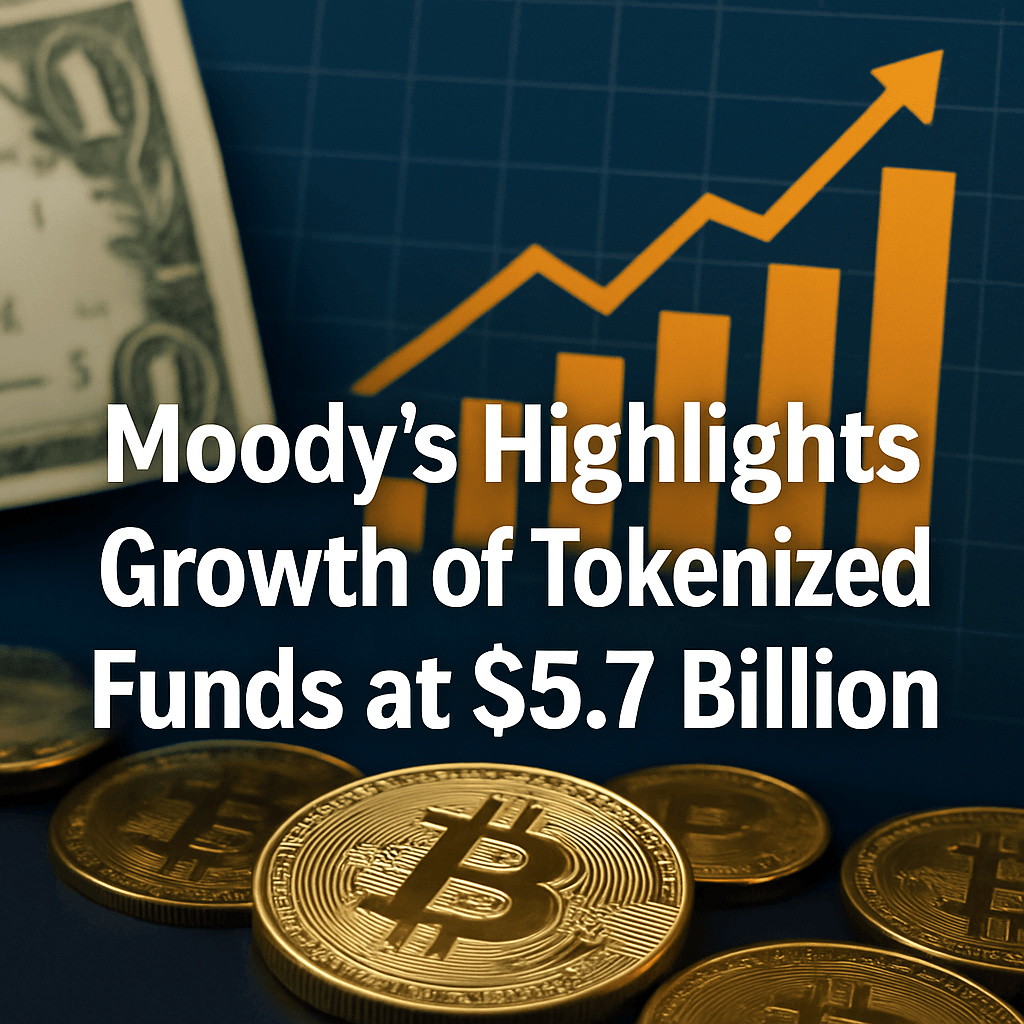Moody’s Highlights Growth of Tokenized Funds at $5.7 Billion


According to a recent report by Moody’s, the market for tokenized funds has experienced rapid growth, expanding to $5.7 billion as institutional investors increasingly turn to this innovative financial instrument. The rise in popularity can be attributed to several factors, including enhanced liquidity, improved compliance, and operational efficiencies that tokenized funds offer over traditional financial products.
Understanding Tokenized Funds
Tokenized funds leverage blockchain technology to create a digital representation of assets, allowing them to be traded on secondary markets more efficiently than conventional funds. By converting traditional investment vehicles, such as money market funds, into tokenized formats, fund managers can reduce friction in transaction processes, thus streamlining operations.
Advantages of Tokenized Funds
- Enhanced Liquidity: Tokenized funds enable fractional ownership, allowing investors to buy or sell smaller amounts, thereby increasing market depth and liquidity.
- Compliance and Regulatory Benefits: Smart contracts embedded within tokenized assets can enforce compliance automatically, eliminating the need for intermediaries, which can lead to reduced costs and faster settlement times.
- Operational Efficiency: The automation provided by blockchain technology can decrease operational burdens on fund managers, leading to lower fees and simplified record-keeping.
Current Market Dynamics
The $5.7 billion valuation of tokenized funds is a significant milestone, but it also reflects a broader trend within the financial services sector. Major asset managers are recognizing the potential benefits of incorporating blockchain technology into their offerings. As financial institutions seek to adapt to a rapidly evolving digital landscape, many are experimenting with tokenization to improve their portfolios.
Despite the enthusiasm surrounding tokenized funds, regulatory scrutiny remains a critical consideration. Authorities across various jurisdictions are examining the implications of blockchain technology on financial regulation, which may lead to changes in how tokenized assets are governed.
Expert Insights on Future Growth
Industry experts, such as those from Deloitte and PwC, suggest that the ongoing integration of artificial intelligence (AI) in financial technologies will play a pivotal role in the evolution of tokenized funds. AI could further enhance compliance capabilities by providing real-time analytics, identifying potential risks faster than traditional methods.
Additionally, technological innovations such as decentralized finance (DeFi) may provide even more utility to tokenized funds, making them an attractive option for a broader range of investors. By leveraging DeFi protocols, tokenized funds may enable lending, borrowing, and yield farming opportunities in new ways.
Challenges Ahead
While the prospects for tokenized funds are bright, challenges remain. Scalability is one of the main hurdles, as the existing blockchain infrastructure must adapt to accommodate increased transaction volumes. Moreover, the complexity of the legal frameworks governing cryptocurrencies and tokenized assets varies significantly from one region to another, posing difficulties for global adoption.
Conclusion
In summary, the $5.7 billion market for tokenized funds illustrates a significant shift within the financial ecosystem, driven by demand for liquidity, compliance innovation, and operational efficiencies. As this sector matures, stakeholders will need to navigate regulatory landscapes and technological challenges, but the underlying trends indicate a favorable trajectory for the future of asset tokenization.
Citing Moody’s insights, the demand for tokenized funds continues to grow amidst changing market dynamics and evolving regulatory landscapes.